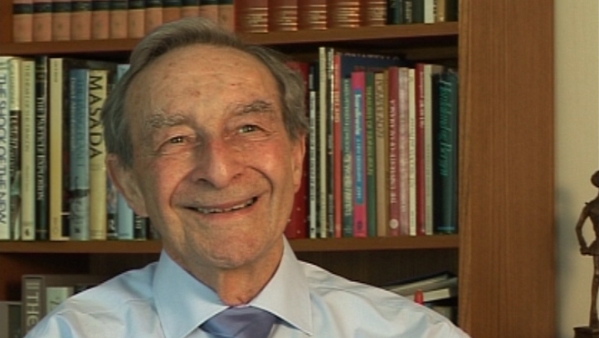NEXT STORY

Lamington Park and the Antarctic forest
RELATED STORIES

NEXT STORY

Lamington Park and the Antarctic forest
RELATED STORIES


|
Views | Duration | |
|---|---|---|---|
| 31. Hitchhiking: the beauty of Sydney | 52 | 02:13 | |
| 32. Lamington Park and the Antarctic forest | 53 | 02:31 | |
| 33. Taking the liner to England | 53 | 03:06 | |
| 34. Passing through the Suez Canal | 55 | 01:51 | |
| 35. Visiting the Buddhist temple in Kelaniya Vihara | 52 | 02:49 | |
| 36. Passing through Aden | 49 | 00:50 | |
| 37. Reaching England | 65 | 03:00 | |
| 38. Harry Emeléus | 69 | 01:06 | |
| 39. Arriving in Cambridge | 186 | 02:28 | |
| 40. Meeting my paternal relations | 70 | 02:20 |


Then I went through some beautiful country, down from the ranges behind Sydney, and down into the Nepean Valley, and then into Sydney. The change is dramatic, from burnt-out, dried bushland to lush, coastal scenery, and in fact it was these mountains just a bit further up – they're called the Blue Mountains – which were a bar on development from Sydney in the first place, because the settlers couldn't get through these mountains and into the rich grazing lands beyond. Anyway, I got to Sydney, and I was blown by Sydney, I thought that was terrific. I mean, even as in Melbourne there, we had a beach, and we had Port Phillip Bay and the Rip, and things like that, but Sydney was something else again. I don't think that there's another piece of coastal Sydney from 50 miles south in, say Wollongong, up to the Hawkesbury Valley, which is 50 miles north... that scenery, that 100 miles of coastal scenery, is superb. On the beaches there are coves, they're not large beaches, but they're sandy and they're good surf. Inland, there are beautiful mountain sceneries, thick forests, the Hawkesbury River itself is a lovely place, and so I went through all of this, getting a lift. Well, I called in at Sydney University, of course, and saw things there, but I didn't pay any scientific visits. This was just sightseeing places in Sydney, and I learnt a lot about Australia.
And going further north I went to Byron Point, which is the most easterly part of Australia and this, of course, was where Captain Cook would be sailing up to Mount Warning where he nearly wrecked the Endeavour, because he was getting near the coral reef, and that was a real hazard in those days, for sailors.
Norman Greenwood (1925-2012) was born in Australia and graduated from Melbourne University before going to Cambridge. His wide-ranging research in inorganic and structural chemistry made major advances in the chemistry of boron hydrides and other main-group element compounds. He also pioneered the application of Mössbauer spectroscopy to problems in chemistry. He was a prolific writer and inspirational lecturer on chemical and educational themes, and held numerous visiting professorships throughout the world.
Title: Hitchhiking: the beauty of Sydney
Listeners: Brian Johnson
Professor Brian FG Johnson FRS, FRSE, FRS Chem, FAcad Eu, FAS. Professor of Inorganic Chemistry University of Edinburgh 1991-1995, Professor of Inorganic Chemistry University of Cambridge 1995-2005, Master Fitzwilliam College Cambridge 1999-2005. Research interests include studies of transition metal carbonyls, organometallic chemistry, nano- particles and homogeneous catalysis. Professor Johnson is the author of over 1000 research articles and papers.
Tags: Sydney, Nepean Valley, Blue Mountains, Melbourne, Port Phillip, The Rip, Wollongong, Hawkesbury Valley, Hawkesbury River, University of Sydney, Australia, Byron Point, Mount Warning, HMS Endeavour, James Cook
Duration: 2 minutes, 13 seconds
Date story recorded: May 2011
Date story went live: 25 November 2011